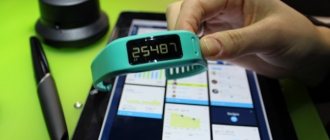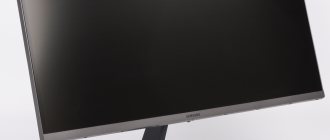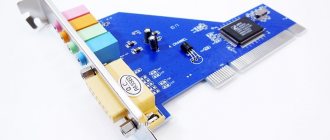Theory.
Many people mistakenly think that IP cameras or recorders in analog systems have powerful analytics on board that analyzes every pixel in every frame and produces an accurate result. Such an algorithm requires extremely large resources, which camera and recorder processors are not capable of. Everything happens much easier! For optimal compression, the H.264 codec uses an IPB frame sequence algorithm, in which only the I-frame stores the complete image in JPEG format, the remaining frames record changes over time.
The I-frame periodicity parameter is configured in the codec and can have the parameters “after how many seconds will the I-frame be set” and “after how many frames will the I-frame be set”. In our cameras, the first parameter is set and its minimum value is 1 frame in 2 seconds. The longer the frame exposure period, the less space the stored video takes up, but on the other hand, in case of problems with data transfer, the image is restored only with the next I-frame; visually we see this as the video being scattered into cubes. Now let's move on to the “hardware” definition of movement. It is determined very simply, by bitwise comparison of I-frames. If there is a deviation by a specified percentage between frames, a signal about motion detection is issued. The value is set in the detector settings and usually has 6 values; for optimal operation of the detector, its sensitivity is selected experimentally.
Failure after replacing the display
If the proximity sensor does not work after replacing the screen, then most likely the plastic piece of glass that is installed between the sensor and the front panel of the phone has been lost. Such a malfunction can be eliminated only by installing this part in place. Also, the proximity sensor in a smartphone may not work if the cable leading to the sensor was damaged as a result of replacing the display.
If the screen was replaced at a repair shop, then you must file a claim, provided that the warranty for the work has not yet expired. Otherwise, you may need to purchase and install a new sensor. It is also recommended to entrust this work to a qualified specialist.
Disadvantages of a hardware motion detector.
1. Long period between I-frames.
Even if we set the minimum value, 2 seconds is a lot. If we are filming a car driving past a gate or filming a common corridor, the movement of the object we are interested in may fall into the gap and its movement will not even be recorded. And even if it is recorded, the recording signal will arrive on the recorder when the object has already left the frame and its identification will cause difficulties. This minus is the most important and the situation is the most common. When designing a video surveillance system, this fact must be taken into account.
2. Low sensitivity to small changes
. Let's say you have a camera that surveys the yard, the parking space is 30 meters from the camera and a 3.6mm lens. Even if you select the location of your car on the detector and set the maximum sensitivity, a person approaching the car will not be detected by the motion detector, since this size is not significant for the camera.
3. Interference of natural origin.
These include tree branches moving from the wind, flying birds, heavy rainfall, all of which cause false alarms of the detector. You can, of course, remove branches from the detection zone, but this will only partially reduce false alarms and reduce the response period of the movement we are interested in (see point 1).
4. Night detection with IR illumination turned on.
This is a very sore subject. Since the camera backlight is located in close proximity to the lens, any small object flying past the lens is illuminated by the backlight and triggers the detector. In winter it’s even the lightest snowfall or blizzard; in summer it’s rain, dust, midges, cobwebs, etc. In fact, we get complete motion detection, and the dark time of day is usually the most important time for us and we are deprived of the ability to quickly respond to movement. There are several ways out of this situation - turning off the built-in backlight and installing additional IR lights at a distance from the camera and using cameras with high sensitivity when working in color and minimal additional lighting.
As you can see from the disadvantages mentioned above, the built-in detector is not a panacea and for many real cases is not a reliable means of storing video information about ongoing events. Xiongmai recorders have the function of simultaneous continuous recording with recording of segments caused by a motion detector; we recommend this particular recording method, since you can always view the moment of recording that interests us, which will not be on the detector in situations of points 1 or 2. On the other hand, accelerated viewing of recordings motion detector allows you to quickly view events that have occurred over the past 24 hours.
Wireless motion sensor for Xiaomi smart home - scenarios, settings
Hello, friends
In my next review about the Xiaomi smart home ecosystem, I will talk about the wireless motion sensor - Xiaomi Smart Human Body Sensor. This is one of the most common and necessary sensors for a smart home system; it can also participate in alarm, lighting, and video surveillance scenarios. More details about everything below.
Where can I buy?
Gearbest Banggood Aliexpress JD.ru
Inspection
The sensor is delivered in a white box familiar to Xiaomi smart home sensors; all printing is done in grayscale, looks neat and is already recognizable.
On the back side the main characteristics are written, as usual - in Chinese, but from the text you can understand that the sensor works using the ZigBee protocol, that is, to pair with the sensor you need the Xiaomi Mi Multi-functional Gateway, uses a CR2450 battery and operates at temperatures from -10 to +45 C
Inside the box, protected around the perimeter by thick cardboard sides, there is a wireless sensor. The first time - the same impression from the humidity sensors and smart cube - “how small it is.” I expected it to be small, but still smaller than I thought.
The only useful things included in the kit are a sensor and one round piece of double-sided tape. There is no spare one like the same temperature and humidity sensors.
The sensor has the shape of a small barrel, on one side of which there is the Xiaomi smart home logo
The other side is a rotating battery cover, on which some data is printed, apparently the year of manufacture, and the type of battery. There is also something like a round rubberized foot on the lid.
Under the cover is a CR2450 cell made by Panasonic. Replacing the battery is easy and quick, you don’t even have to peel off the sensor - just turn it, the cover will remain in place and the sensor will remain in your hand - all you have to do is change the battery.
Although the dimensions are indicated on the box, out of habit I’ll take measurements - diameter 30 mm
The height of the sensor “barrel” is 34 mm, so geometrically it is almost an equilateral cylinder
Sensor weight: only 18 grams
To pair with the gateway you will need a paperclip (not included) - the same one that comes with smartphones, for the SIM tray. I used a paperclip from a Little Square camera, but just a straightened paperclip will work. There is a hole on the side of the sensor behind which there is a pairing button.
To connect, you need to launch the Xiaomi Mi Multi-functional Gateway control plugin, then go to the devices tab and run the wizard for connecting a new sensor. Next, select a motion sensor. After this, you need to use a paper clip to press the pairing button and hold until the sensor blinks blue three times. After this, all that remains is to select the room in which the sensor will be located and one of three icon options.
After this, a new sensor appears in the list of devices. A separate plugin is also not installed, as in the case of a cube. When you click on the sensor, you go to the control screen. It has two tabs - Log, which records all cases of sensor activation, and a scenario window. There are several recommended scenarios in the scenario window - all of them suggest turning on and off lights, sockets, and electrical devices by detecting motion.
In scenarios, the sensor can only act as a condition, which is generally logical. There are 6 options to choose from - motion detection and, on the contrary, no movement for 2, 5, 10, 20 and 30 minutes.
Examples of practical applications - such as night lighting. As a script instruction, which is launched when motion is detected by the sensor, Light up for adjustable period of time of the Xiaomi smart lamp is launched - brightness is 1% of full with automatic shutdown after a minute. The duration of the scenario, for example from 22:00 to 08:00 - in the finished scenario is displayed in the Chinese time zone (if selected, local time is indicated)
The next example is lighting control in a dark hallway. We come in from the street, bags in hand, and there is no need to fumble for the switch - the light turns on itself. As long as the sensor registers movements, the light will be active, and after you leave the hallway, the light will go out on its own, so you won’t have to come back. Another option is a scenario in which, when a motion sensor is triggered, the recording of an alarm video by a surveillance camera will be activated along with a notification to the control device.
Since we are talking about security, then of course we need to configure the alarm mode on the Xiaomi gateway. For this, in the scenarios tab there is a special section - Arm, which is responsible for setting up the alarm. Let's go through all the settings - Arm Timer - days and times of alarm operation, when the parameter is turned on - the alarm is set automatically. Not a prerequisite - you can activate and disarm the alarm manually. The condition for triggering the alarm is to check the box next to the motion sensor. If there are several sensors, you can select all of them.
Next, select the alarm activation interval. This is the time between the alarm being activated and arming. By clicking on the Alarm on button, you have 15 seconds (the screenshot is an example) to leave the range of the motion sensor. All that remains is to select the type of sound signal, its volume, duration, and sending a notification to the control device. It must be yelled quite loudly, uninvited guests - I think they won’t be running around the apartment when this alarm goes off. Here it would be fair to note that due to the shaking of Chinese clouds, sometimes (not always) there is a slight delay - up to a minute, no more, between setting the alarm and responding to the sensor. But after a minute has passed from the moment the security mode is activated, it works 100%. I’ll also give an example of a security scenario, in which, upon detection of motion, a light turns on and illuminates the alien, the camera films an alarming video, the gateway creates a pleasant musical background with a police siren, and you receive a notification that the motion sensor has been triggered.
Due to its small size and weight, the sensor is easy to position in the right place; the included adhesive tape easily holds it on the surface in any orientation - above or below it. You need to choose a place that is not conspicuous and so as not to accidentally touch or knock down the sensor. You should also consider using the sensor in different scenarios at the same time.
For example, in this order I took two sensors at once and chose the locations in such a way that the entrance to the apartment and the corridor connecting the rooms are controlled. Thus, the sensors work in two directions - lighting control and security. The scenario - “Leaving home” - turns the gateway into security mode, deactivates all unnecessary scenarios for lighting control, etc. The second scenario - “Returning home” - turns off the alarm and activates a scenario in which one of the sensors turns on the light in the hallway and turns it off after two minutes of no movement, the second - at night turns on a light backlight if it detects movement along the corridor. The number of scenarios in which each sensor can operate, both simultaneously and separately, is essentially unlimited.
The sensor - I consider one of the most necessary for a smart home system - because it will allow the system to recognize the presence of a person, and, depending on this, launch the necessary scenarios.
Video version of my review:
All my reviews of Xiaomi devices in chronological order - List
All my video reviews - YouTube
Thank you for your attention - see you again.
Alarm entry in surveillance cameras.
Our company is one of the few that mass-produce cameras with an alarm input option and, probably, the only company among those producing such budget cameras. To assemble a camera with an alarm input, you need to select “Cable with microphone input” and indicate in the comments that the “tulip” connector should be connected to the alarm input. The alarm input of an IP camera is the moment of intersection of two closely related areas of security systems - security surveillance and security alarm. In the camera we have a standard 12 volts, from which various sensors are powered and an input that receives the signal from the sensor. When using an alarm entrance, we eliminate all the described disadvantages, but on the other hand, with a large selection of security sensors, we get an increase in costs both for equipment and for installation of sensors, which usually have a short range of action. When an alarm signal is received, recording begins immediately; unlike point 1, sensors usually do not respond to minor interference and have a minimum of false alarms.
Joystick for smartphone
BUY HERE - HERE and HERE
announcements and advertising
2080 Super Gigabyte Gaming OC for 60 rubles.
Compeo.ru - the right comp store without any tricks
RTX 2060 becomes cheaper before the arrival of 3xxx
Ryzen 4000
series included in computers already in Citylink
The price of MSI RTX 2070 has collapsed after the announcement of RTX 3xxx
Core i9 10 series is half the price of the same 9 series
The price of memory has been halved in Regard - it’s more expensive everywhere
Price $22
Ipega joystick designed for use on iPhone/Android smartphones and tablets with a 4-6 inch screen. Combines a compact and lightweight design with the best features. The kit includes a USB cable and a 2.4G receiver.
Microwave motion sensor of our own production.
To best meet customer needs, our company has developed a motion sensor based on the Doppler effect. The microwave sensor emits a high-frequency signal and catches the reflection of this signal from surrounding objects. If objects appear in the controlled volume, the reflective pattern changes, which is an event for the sensor to send a signal to the receiving device. In our case, this is an IP camera. Some major brands produce indoor cameras with a built-in IR sensor, but IR (thermal) sensors have a number of disadvantages and such cameras do not have dome housings and cannot work outdoors. Our microwave sensor is more versatile and processes events of interest to us more efficiently. Firstly, the sensor does not have to be in the most visible place. Thin obstacles are not a hindrance to the high-frequency signal; it can be removed under an Armstrong-type ceiling, behind a plasterboard wall, in an installation box, etc. Even a brick wall is not an obstacle to the sensor; it will only slightly reduce the sensitivity. The only signal insulator is metal. The microwave sensor can respond to objects close to the ambient temperature, unlike IR sensors. Does not respond to heat flows caused by heating devices or local heating of the sun. The viewing angle of the microwave sensor is 180 degrees with increasing sensitivity in the center. Our microwave sensor begins to respond to human-sized objects from 7 meters, provided there is no interference. For transport, the range increases.
Specifications
| Battery type | CR123A |
| Number of batteries | 1 PC |
| Current consumption in standby mode | 20 µA |
| Standby time | up to 5 years |
| Detection range | up to 7 m |
| Detection Angle | 110° |
| Wireless connection type | WiFi 2.4 GHz |
| Communication protocol | IEEE 802.11b/g/n |
| Working as part of a smart home | Alexa Echo, Google Home |
| Giving an alarm | notification |
| Application notification | There is |
| Wi-Fi range | up to 45 m |
| Operating temperature range | 0 - 40 °C |
| Operating in relative humidity | 20 — 85% |
| Storage temperature range | 0 - 60 °C |
| Storage Relative Humidity Range | 20 — 90% |
| Size | 50x48x48 mm |
| Weight | 41 g (with bracket) |
Record by motion only.
When writing an article about detection, you cannot ignore the problems. related to recording to the hard disk. If recording is carried out only by a motion detector and these movements are quite rare on all cameras of the recorder, then some hard drives “fall asleep” during idle periods. When movement occurs, the disc begins to spin and only after that recording begins. We have two negative points - frequent falling asleep and spinning up the disk negatively affect the reliability of the disk. In such conditions, disks last six months to a year, depending on operating conditions. During disk spin-up, recording is not performed, therefore, in addition to point 1, we also lose recording for this time, usually 2-3 seconds.
We hope that with the help of our articles you will learn how to build the right video surveillance systems, and their effectiveness will be maximum!
20.03.2018
Purpose of the sensor
Almost every owner of a phone equipped with a touch screen has encountered a situation where some functions of the device were activated by carelessly touching the screen. Both in push-button telephone models and on devices equipped with a touchscreen, it is possible to lock the display. The disadvantage of manually activating such a function is the time delay, which can be critical in certain conditions.
For example, while making a call, you need to temporarily lock the screen so that touching your ear does not interrupt the call or activate an unwanted communication mode. Immediately after the end of the call, on the contrary, it is necessary to interrupt the phone as soon as possible in order to avoid increased expenditure of money. In such a situation, the presence of a proximity sensor in a smartphone is difficult to overestimate, because such a device will automatically block the display during a call and remove the restriction on entering information the next time your hand approaches the screen. When carrying a smartphone in a pocket, the proximity control system can also temporarily disable touch screen activity.
The presence of a sensor of this type in the phone allows not only to significantly increase the level of comfort when handling the gadget, but also to significantly save battery power, because the turned on display consumes a significant amount of electricity.
What kind of beast is this – a motion sensor equipped with a GSM module?
In addition to the full-fledged security systems described above, their analogues with a minimal configuration have become widespread. That is, it is a motion sensor with a GSM module, which, despite the simplicity of its design, is capable of functioning on par with full-fledged security systems. Moreover, such devices include an electronic unit consisting of the main elements:
- GSM module;
- wireless motion sensor;
- autonomous power source.
And all this is hidden under one body and represents a functional security complex, despite the minimal content. As soon as the intruder enters the area under the control of the sensor, the device will immediately respond to this event. It almost instantly sends a signal to the electronic module, and it is tuned to the network of the selected mobile network operator. That is, at the right time, the owner of the object will be notified of the fact of an offense by receiving an MMS or SMS newsletter. Another option is to receive a call to the number specified in the settings.
Important point!
The operation of this kind of alarms is based on the use of mobile devices through the transmission of SMS commands.
In other words, a GSM sensor is the same functional complex that provides the protected object with protection from encroachment by third parties. Everything is just done in a simplified form.
Light sensor
As you can guess from the name, this sensor measures the level of ambient light, which allows you to automatically adjust the comfortable brightness of the display.
With each new generation of smartphones, sensors become more efficient, smaller and less energy-consuming. Therefore, you should not think that, for example, the GPS function in a device that is several years old will work as well as in a new one. And even if the information about new smartphones does not indicate the characteristics of all these sensors, rest assured that they are the ones that allow you to take advantage of many of the impressive functions of modern gadgets.
Accelerometer
The accelerometer measures acceleration and allows the smartphone to determine characteristics of movement and position in space.
It is this sensor that works when the vertical orientation changes to horizontal when the device is rotated. He is also responsible for counting steps and measuring movement speed in various map applications. The accelerometer provides information about which direction the smartphone is facing, which becomes an important function in various augmented reality applications. This sensor itself consists of small sensors: microscopic crystalline structures that, under the influence of acceleration forces, transform into a stressed state. The voltage is transmitted to the accelerometer, which interprets it into data about speed and direction of movement.
How to turn off the motion sensor on Android using applications
If for some reason it was not possible to disable the proximity sensor through the standard settings or this method seems complicated, third-party applications will come to the rescue. Let's look at a few simple utilities that will help you quickly switch the activity of the motion sensor.
Proximity Sensor On Off
You need to enter the name of the application in the Play Store search and download applications with the same icon as in the screenshot. Then open the application and click on the Screen Off field and grant the application the necessary permissions, if requested.
Done - the proximity sensor is now inactive.
Smart Screen On
You also need to enter the name in the Play Market and select an application with a similar icon from the list, since other advertising applications may be the first.
Once launched, the device will provide a brief guide to its capabilities and then ask for permission to perform administrative functions. This is necessary so that the application can configure the device's hardware modules.
After opening the application, in the settings menu you should find the item “Proximity sensor is enabled” and uncheck the box next to it.
The utility also allows you to configure the sensor to be turned off when certain applications are running, but not always.
Sensor Disabler
After installing the application from the Play Market, you should open the Sensor Disabler application and go to the menu tab. To do this, click on the hamburger menu (the icon of three horizontal bars) in the upper left corner, and then select Proximity.
Then check the box opposite the line Remove Sensor, or Mock Sensor Values to set the distance in centimeters at which the sensor will be triggered. Then save the settings by clicking on the button in the lower right corner.











